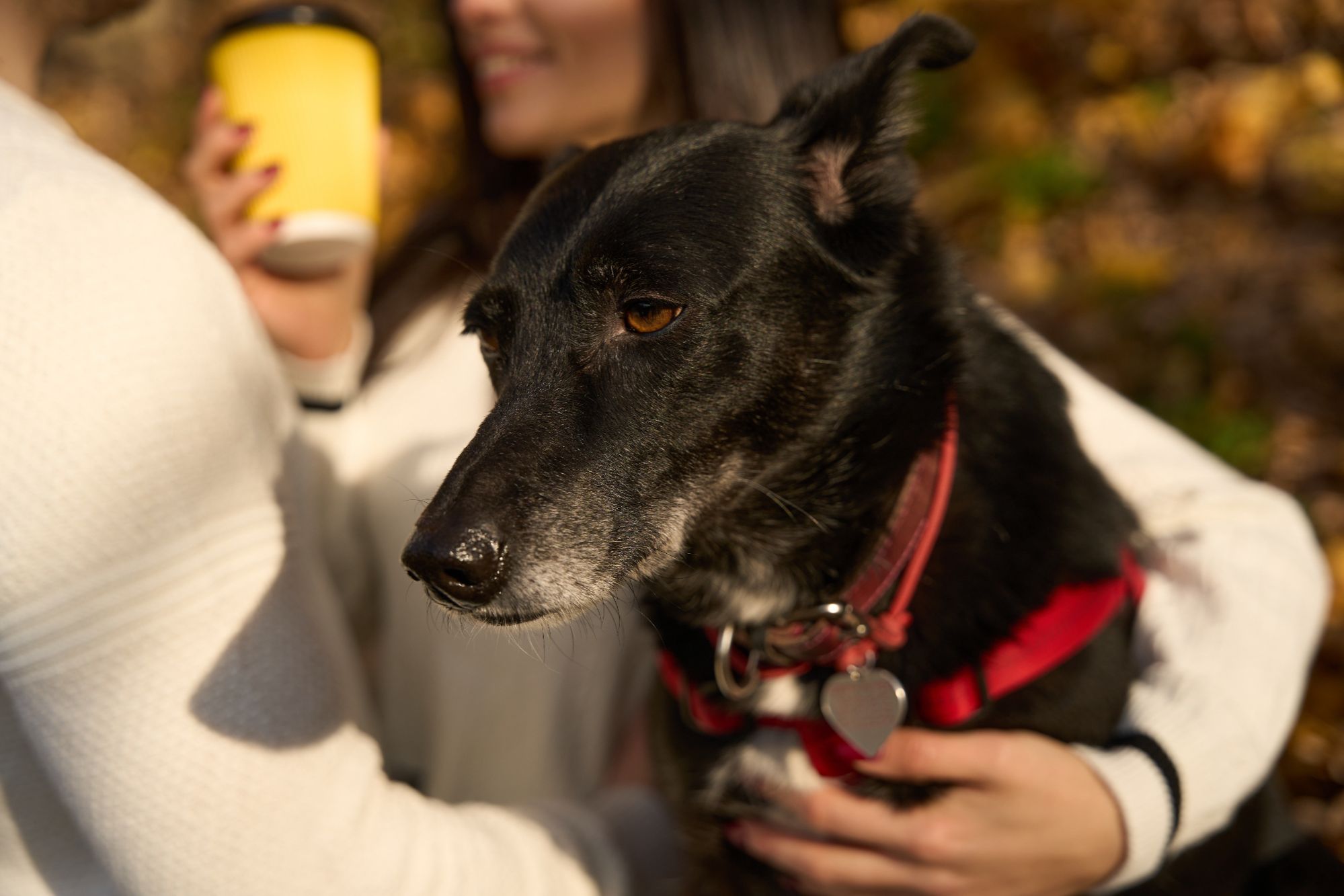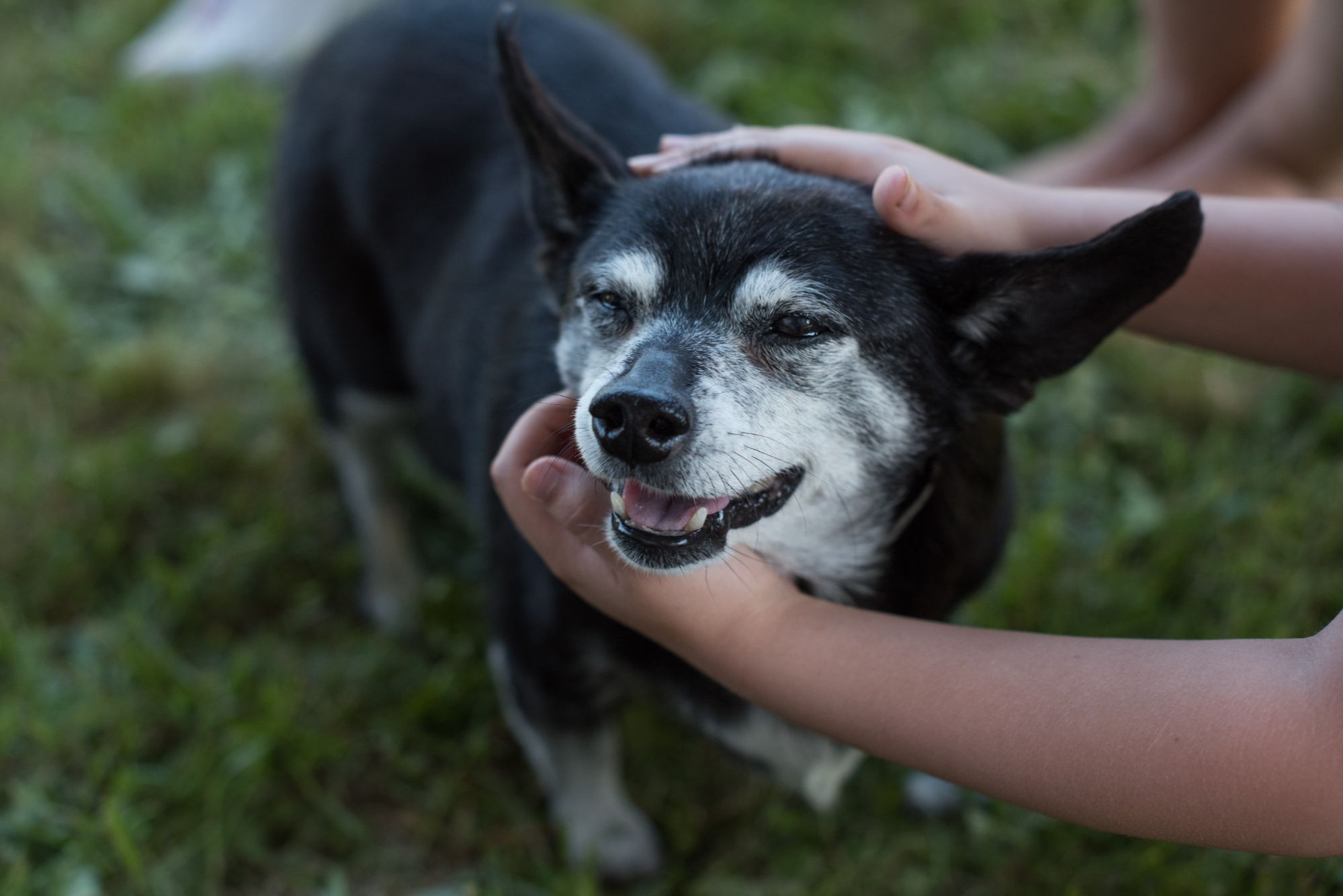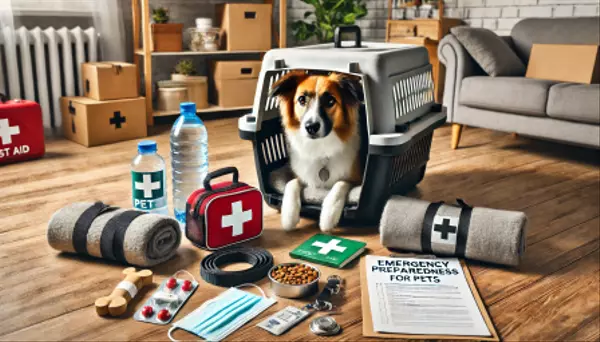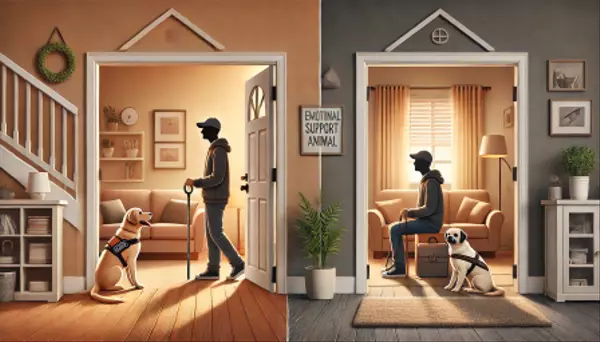Moving with Senior Dogs: Tips for a Smooth Transition


Moving can be stressful for anyone, but the challenges can increase when you add a senior dog into the mix. Older dogs have unique needs that require special care during a transition. Whether you’re moving to a house, condo, or apartment, these tips will help ensure your senior pup's comfort and well-being every step of the way.
1. Pre-Move Preparations: Keep Routine and Comfort Items
1. Pre-Move Preparations: Keep Routine and Comfort Items

Senior dogs are creatures of habit. Before the big day, try to keep their routine as normal as possible. Stick to regular feeding, walking, and sleep schedules. Here’s how to help ease the transition:
- Keep Familiar Items - Bring their favorite bed, toys, and blankets to help create a sense of security.
- Vet Check-Up - Schedule a vet visit before your move to ensure they’re healthy and ready for travel. Get any necessary medications refilled, especially if your dog has conditions like arthritis or anxiety.
- Update Microchip Information - Ensure their microchip and ID tags are updated with your new address and phone number.
2. On Moving Day: Create a Calm Environment

Moving day can be chaotic, with people coming and going, which might overwhelm your senior dog. Consider these steps to maintain a calm environment:
- Set Up a Safe Space - Create a designated area away from the hustle and bustle, like a quiet room with their bed, water, and a few toys.
- Hire Help - If possible, have a pet sitter or trusted friend take care of your dog during the move to keep them stress-free.
- Use a Calming Aid - If your senior dog is prone to anxiety, ask your vet about calming supplements or pheromone sprays to help them stay relaxed.
3. Traveling to Your New Home: Plan for Comfort
- Set Up a Safe Space - Create a designated area away from the hustle and bustle, like a quiet room with their bed, water, and a few toys.
- Hire Help - If possible, have a pet sitter or trusted friend take care of your dog during the move to keep them stress-free.
- Use a Calming Aid - If your senior dog is prone to anxiety, ask your vet about calming supplements or pheromone sprays to help them stay relaxed.
3. Traveling to Your New Home: Plan for Comfort

Long car rides or flights can be especially hard on senior dogs. To keep them comfortable during travel, plan ahead:
- Frequent Breaks - If you're driving, make regular stops to allow your dog to stretch, relieve themselves, and hydrate.
- Comfortable Carrier or Harness - Use a well-padded carrier or a harness to keep your dog safe and comfortable during transit.
- Temperature Control - Ensure your vehicle or cabin is kept at a comfortable temperature, as older dogs can be more sensitive to heat or cold.
4. Settling into the New Home: Ease the Transition

Once you arrive, it’s essential to introduce your senior dog to their new environment in a way that reduces stress:
- Start Slowly - Introduce them to one room at a time, starting with a space where they can rest and relax. Place familiar items like their bed, blanket, and toys in this room.
- Stick to the Routine - Continue with their regular feeding, bathroom, and exercise schedules to give them a sense of normalcy in their new surroundings.
- Keep Floors Senior-Friendly - If your new home has stairs, hard flooring, or slick surfaces, consider adding ramps or non-slip rugs to make moving around easier on your dog’s joints.
5. Be Patient: Understand Behavioral Changes

Even the most well-adjusted senior dogs can have trouble adapting to a new home. You may notice changes in behavior such as increased anxiety, confusion, or even reluctance to eat. These are common and often temporary reactions, but here’s how to help them adjust:
- Provide Extra Comfort - Offer plenty of reassurance with affection, treats, and attention.
- Create a Quiet Environment - Avoid loud noises, and limit new visitors until your dog feels comfortable.
- Consult a Veterinarian - If behavioral issues persist, it’s a good idea to consult with a vet to rule out any medical issues.
6. Pet-Friendly Features to Look for When Moving
- Provide Extra Comfort - Offer plenty of reassurance with affection, treats, and attention.
- Create a Quiet Environment - Avoid loud noises, and limit new visitors until your dog feels comfortable.
- Consult a Veterinarian - If behavioral issues persist, it’s a good idea to consult with a vet to rule out any medical issues.
6. Pet-Friendly Features to Look for When Moving

If you’re still in the process of choosing a new home, there are a few features that can make life easier for both you and your senior dog:
- Single-Story Layout - Older dogs may have difficulty navigating stairs, so a single-level home can reduce strain on their joints.
- Outdoor Space - Look for a home with a secure, pet-friendly yard where your senior dog can enjoy easy access to outdoor time.
- Non-Slip Flooring - Hardwood or tile floors can be slippery, which may be challenging for older dogs. Look for homes with carpets or plan to add rugs to help your dog move around comfortably.
Moving with a senior dog requires a bit more planning and attention to their physical and emotional needs. However, with the right approach, you can make the transition as smooth as possible for your furry friend. Remember, patience and routine are key to helping them adjust to their new home. At The Spotted Dog Group, we understand the importance of finding a home that suits the whole family – pets included! Contact us if you’re looking for pet-friendly properties catering to your senior dog's needs.
Categories
Recent Posts

Dogs' Favorite Home Features (Directly from Homer the Real Estate Rescue)

Dogs' Favorite Home Features (Directly from Homer the Real Estate Rescue)

The 10 Best Pet Products of 2025: Must-Haves for Every Pet Parent

Moving with Dogs: Tips for a Successful Car Ride

Spring Home Maintenance: Refresh and Protect Your Home for the Season

The Condo Crisis in South Florida: Financing Roadblocks, Rising Fees & Market Slowdowns

Hiking with Your Dog: Tips for Keeping Them Safe and Happy

Keeping Pets Safe in an Emergency: A Homeowner’s Guide to Preparedness

Taking Your Dog to the Beach: A Pup’s Guide to Fun and Safety

Service Animals vs. Emotional Support Animals: What Every Tenant and Landlord Should Know About Housing Rights
GET MORE INFORMATION
Meghan Pachas
Broker Associate
